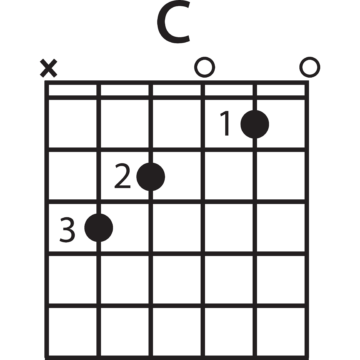How to Write a Love Song

Everyone wants to write a love song that stands out among the rest! Each person has a unique love story to tell. So, when you start writing your love song, where should you begin?
Every basic love song uses music and lyrics. The verses will tell what is unique about your romance and what love means to you. Then, the music and rhythm reinforce what the words say by matching your tone. Both the words and music will need to work together for a happy ending. Just like two people in love!
We have some tips if you need a little push to get your creative juices flowing. We’ll help you brainstorm ideas for the lyrics, discuss which chords you should use, and help you set the tone of your piece.
Are you ready to get started? Let’s write a song about love!
How to think while writing a love song.
As you start writing your love song, think through what you want to express. (Love, obviously.) But more specifically, what do you want the listener to take away from your love song? Will it be an emotional song, have a playful touch, or tell a story ballad-style?
Put on a few of your favorite love songs while you brainstorm ideas. What do you like the most about these songs? What story do they tell? What feeling does this song create?

If you are looking for inspiration, you’re in the right place! Here are some ways to create a unique love song without reinventing the wheel.

Compliment the love with a catchy hook.
One way to draw the listener into your story is to use compliments with a catchy hook. You can paint a picture with your words or be playful and fun. Elton John’s Your Song is catchy and sweet in its compliments. This song doesn’t take things too seriously, either.
Ask yourself a few questions to find a hook that fits your love story. What was the first thing that drew you to your partner or crushes on a deeper level? How did you meet? Was it love at first sight? What is your favorite thing about your love?
You can continue to reference this hook or theme throughout your song.

Write from experience and avoid cliches.
While searching for the right words, it’s easy to fall back on common love song language. However, using too common comparisons can make your song sound cliche. Just because these lines were famous doesn’t necessarily mean we should keep using them.
Phrases like “our love is a rose,” “happy as a clam,” or even “life is a journey” have seen their day. But we still don’t feel the need to pop those into modern love songs.
Try to think of new, creative comparisons that carry the mark of your romance story.

Use uncommon metaphors.
To make your song catchy and unique, you can use metaphors, similes, and creative language to express yourself. Your love story is like no one else’s, so let the world know why it’s unique. Choose imagery that will inspire both smiles and watery eyes.
If you’re coming up empty, see how other artists break out of the norm with their love song language. Songs like The Way That I Love You by Passenger, Coldplay’s The Scientist, and Hearts Don’t Break Around Here by Ed Sheeran contain great metaphors, similes, and creative language. These songs create a feeling by using unconventional comparisons and themes.
Get creative with words if you can, but don’t force metaphors just to use them. For instance, love is endless, and so is a black hole, but comparing those two things may not be the best metaphor for a romantic song. Embellish your lover’s best traits using comparisons that have positive connotations. If a metaphor doesn’t work in your music, use straightforward and candid lyrics instead.
Be yourself, and let your words flow.
Things to remember while recording a love song.
Now that you have some words penned down, it’s time to work on the music. While you may think the lyrics are of utmost importance, a great tune can make the song.
Ever had a catchy love song that got stuck in your head? This is usually due to the melody of the song. An artist can sing a subpar song, but the melodic line can knock your socks off. Music can pull your heartstrings as much or sometimes even more than words.

Some love songs are pretty simple when you separate them from the lyrics. For example, the classic song, What a Wonderful World, is a charming love song. But when you read the verses, you realize the music line and Louis Armstrong’s iconic voice make this song unforgettable.
So if you are more of a musician than a wordsmith, make those notes count! Let’s look at how to create a tune and write a love song on the piano.

Tune your lyrics to the right chords.
Most music artists write romance songs (and most songs in general) in major keys. Major keys are easy to sing and have a happy tone, while we generally reserve minor keys for sad songs. Assuming your love song is sweet or happy, a major key is probably the way to go. However, there is such a thing as a sad love song.
Adele, Taylor Swift, and Lewis Capaldi are prime examples of pop artists who express love with pathos and longing. Some of these songs are in major keys. The song, Someone You Loved? Yep, that’s a predominately major song.
Another anomaly is Lady Gaga’s Bad Romance which sounds upbeat but is in a minor key. In an academic study, Bad Romance’s catchy tune was rated most likely to get stuck in your head.
Some famous love songs written in a minor key are Here Without You by 3 Doors Down, Fast Car by Tracy Chapman, and Nina Simone’s Feeling Good. Young and Beautiful also hit several minor chords. These songs express longing and tug at the heartstrings.
Once you pin down your love song’s overall theme and tone, you can attach the correct key signature and chords to your piece.

Keep the melody line inside your vocal range.
It would be a shame to compose a song and have your voice break–not from emotion–but because you can’t reach the notes.
The average voice can range between one and a half to two octaves. Most human voices can extend three octaves, but you might need some voice lessons to reach that full potential. Then there are singers like Axl Rose and Mariah Carey that can get five or six octaves, but that’s insane. Not everyone’s voice can sing Vision of Love!
If unsure what your voice can handle, sing a scale up and down the piano until you find your range. Then write music that is comfortable for your voice.

Use a romantic tone.
Once you have the lyrics, you’ll want to match the tone of your song to your words. If you think any tone will work, try screaming, “I LOVE YOU,” at your partner and see how that goes. (Ok, probably don’t do that, but you get the point.)
The majority of romantic songs will use a sweet, smooth tone. (So skip the screamo and staccato notes.) You can use slur lines, a legato tempo, and a foot pedal for a soft and relaxed (or sad) sound.
You can use a quicker tempo if you want your love song to sound more upbeat and energetic. (Think Beautiful Day by U2.) Use those eighth notes and let them play up and down the scale.
Make sure you create a melody that fits your lyrics’ tone and rhythm.
Share your song with everyone.
Once you set your lyrics to music, you’re ready to share it with the world! Need to brush up on your piano technique? Simply Piano is a tool that can help you nail the right notes and sharpen your skills on the piano. Learn to accompany your voice on the piano and sing out your love song with all your heart! We’re ready to hear it!









